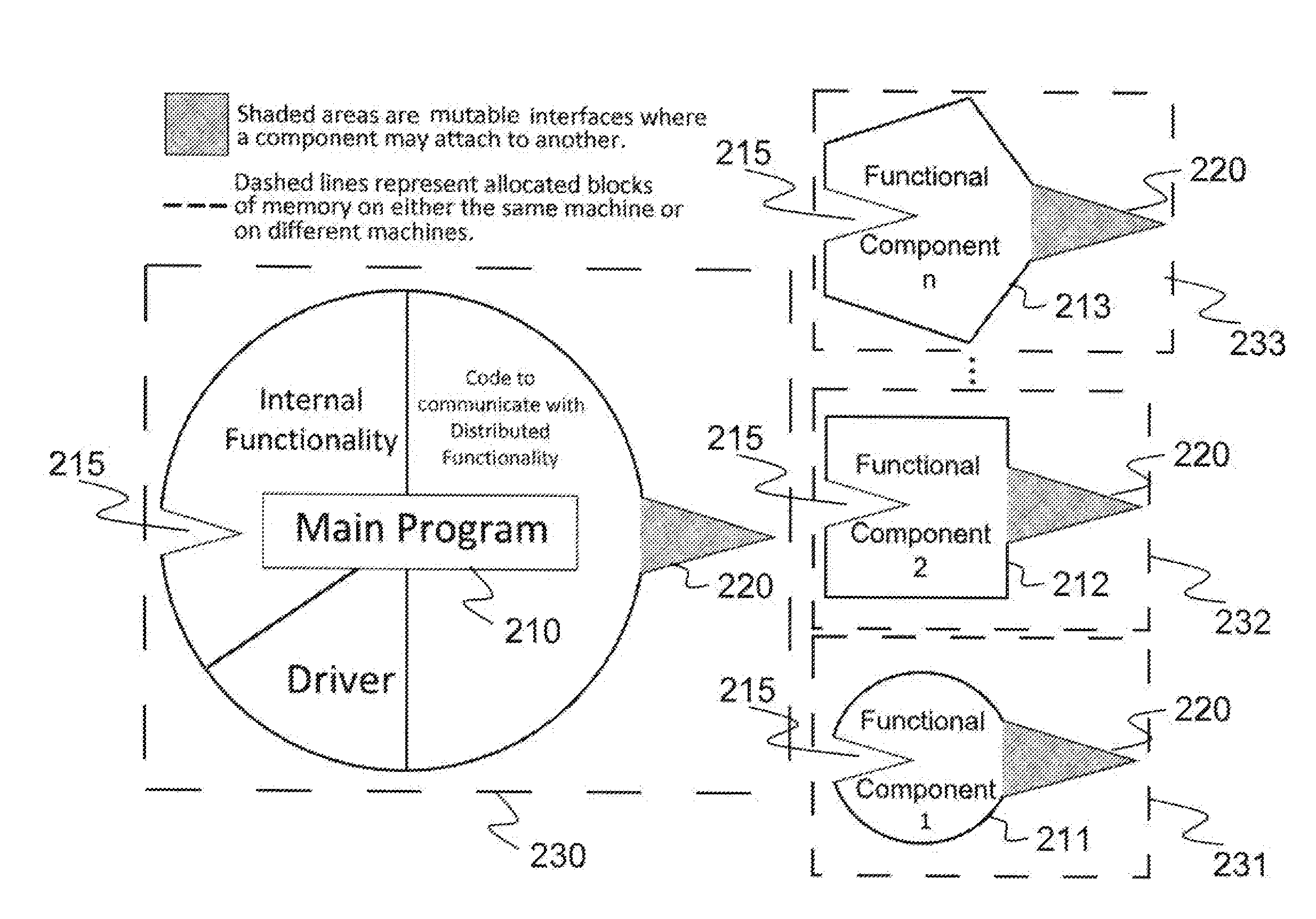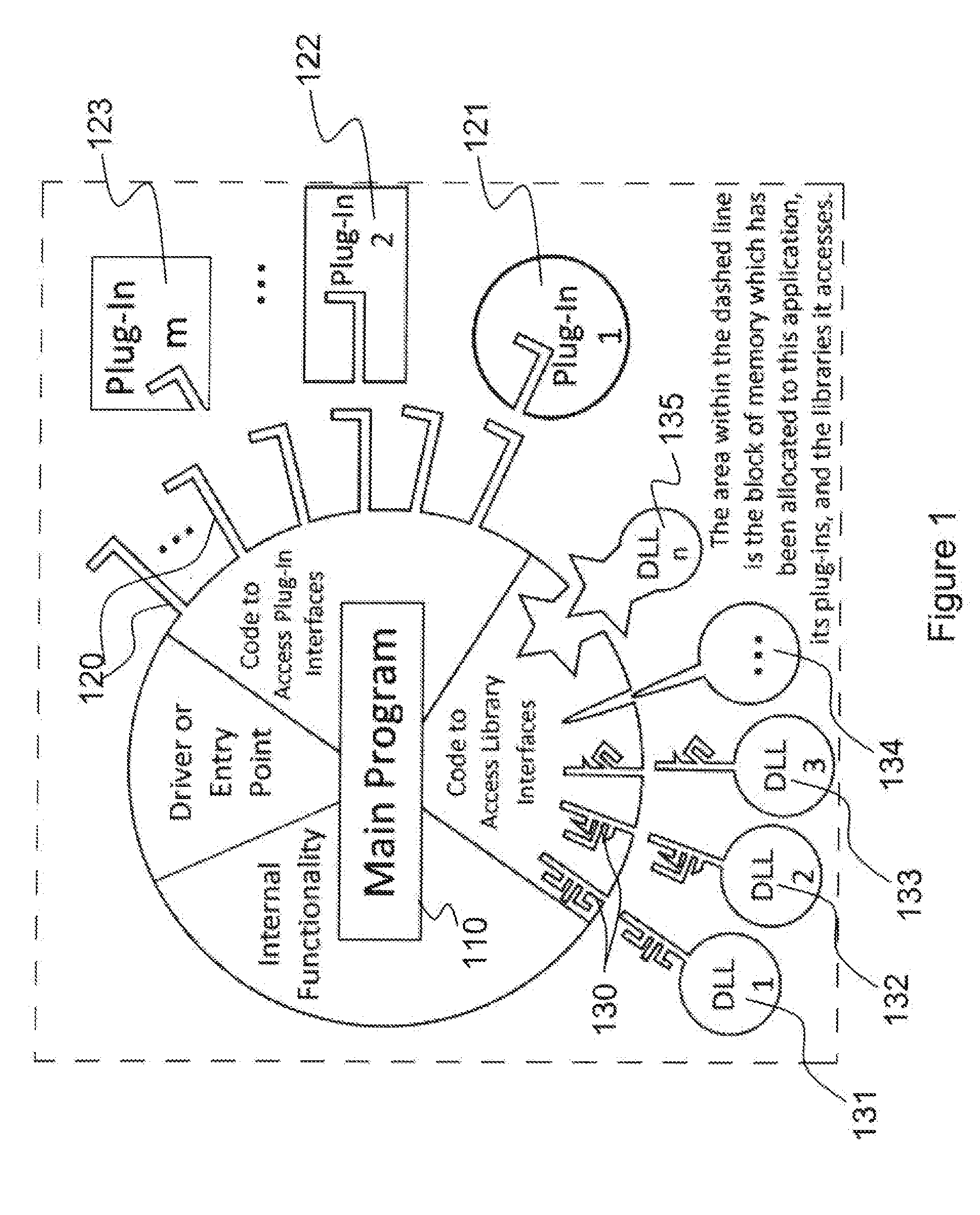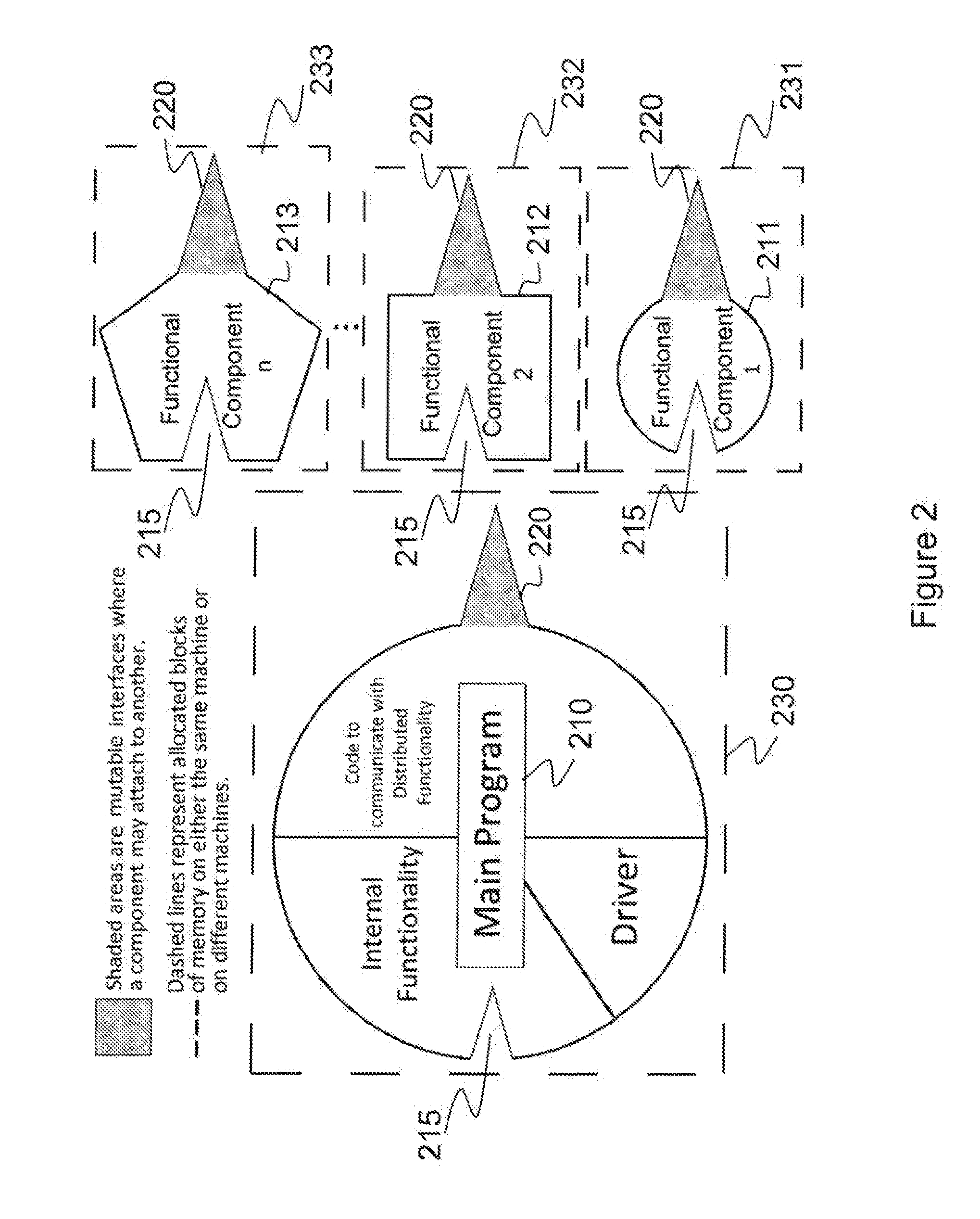System and Method for Constructing an Application Using Distributed Functionalities
a technology of distributed functionalities and system and method, applied in software design, instruments, computing, etc., can solve the problems of not displaying all of the functionality that each of these applications provides, the toolbars, and the functionality that is not available in the other programs, and achieves the effect of easy expansion
- Summary
- Abstract
- Description
- Claims
- Application Information
AI Technical Summary
Benefits of technology
Problems solved by technology
Method used
Image
Examples
Embodiment Construction
[0056]The present invention is a software architecture that provides a new way of “factoring out” the functionalities in a software suite. The concept for this invention originated with discussions of what it would mean to have a “context-sensitive” user interface. As described above, user interfaces for products with complex functionality tend to be very complex, making it difficult for the user to figure out how to access the product's functionality, or even to know what functionality is available. The idea of the context-sensitive user interface is that the interface provides access to only those features relevant to the current user task, and the features needed to change the context—i.e. to signal completion of the current task and / or initiate another task. The task being performed by the user is determined by the context—i.e. by where the user is currently working within an application. “Functional Distribution” was originally conceived as an approach to achieving greater cont...
PUM
 Login to View More
Login to View More Abstract
Description
Claims
Application Information
 Login to View More
Login to View More - R&D
- Intellectual Property
- Life Sciences
- Materials
- Tech Scout
- Unparalleled Data Quality
- Higher Quality Content
- 60% Fewer Hallucinations
Browse by: Latest US Patents, China's latest patents, Technical Efficacy Thesaurus, Application Domain, Technology Topic, Popular Technical Reports.
© 2025 PatSnap. All rights reserved.Legal|Privacy policy|Modern Slavery Act Transparency Statement|Sitemap|About US| Contact US: help@patsnap.com



